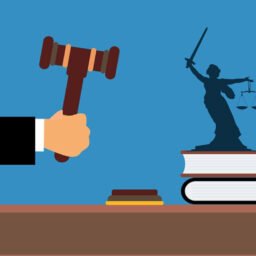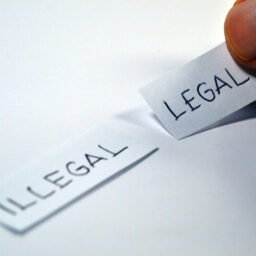INTRODUCTION
Times are changing. The human race has evolved continuously in all aspects of life, be it medical, engineering, law, art, infrastructure and many more. One can say that the advancements that we have made in the technological department of day-to-day life are one of the most rewarding and life-changing. We are continually developing, as now we can store large amounts of data and information, transfer it at high speeds and even retrieve it if one accidentally deletes something important. Such means of technology is now being used at various departments, be it healthcare, engineering, corporate related tasks and governance too.
One might think, why would there be any kind of need to merge the technology, internet with governance? Well as the population of the world is rapidly increasing, especially in India, which is predicted to overtake China in terms of population numbers by 2025, the collection of data and its storage is becoming increasingly difficult. It is also tough to maintain efficient connectivity between different states of the country and even communicate with foreign countries without any reliable technology and connectivity. Also, e-governance helps the administration to not only communicate and imply decisions to its various sub-departments in an efficient manner, but it also allows the govt. to better reach the people at the ground level and make them get access to the services it provides in a better manner. To sum it up in a definition, ‘Electronic governance or e-governance can be defined as the usage of Information and Communication Technology (ICT) by the government to provide and facilitate government services, exchange of information, communication transactions and integration of various standalone systems and services.’
‘In other words, it is the use of technology to perform government activities and achieve the objectives of governance. Through e-governance, government services are made available to citizens and businesses in a convenient, efficient and transparent manner.’
THE NEED FOR E-GOVERNANCE
As we all know, India is culturally very rich. The diversity in religions, ethnicity, races, etc. which can be found in India can nowhere else be found. Such different communities have different expectations and demands from the government, governing such people can be very complex. To fulfil these demands and live up to the expectations of the people, the government first needs to address and listen to what every other community has in terms of its demands. For this, proper communication between the govt and the people is required. Which can only be facilitated through different means of technology, such as different online forums, or websites where the grievances can be addressed. Once the demands are heard, they need to be directed to the sub-departments or services of the government, such as the IAS, IPS, IRS, IDES etc. For the fast and rapid implementation of these directions and orders, efficient communication is required so that the orders can be directed and their completion and updates on the work can be conveyed in a fast manner.
‘National Satellite-Based Computer Network (NICNET)’ was launched in 1987 by the ‘National Informatics Centre (NIC)’. Through NICNET, NIC has been instrumental in steering e-Governance applications in Government Ministries/ Departments at the Centre, States, Districts and Block level, facilitating improvement in Government services, wider transparency, promoting decentralized planning and management, resulting in better efficiency and accountability to the people of India. Its main motive was to enhance communication and connectivity between different govt ministries and services.
NIC also launched the ‘District Information System of the National Informatics Centre (DISNIC)’ program, in which the government offices at primarily district level were provided with computers free of cost. This was another step towards e-governance. ‘Department of Electronics and Information Technology and Department of Administrative Reforms and Public Grievances’ in 2006 also launched a plan called National E-Governance Plan. The primary target and aim of this particular plan were to make the government services available to every person of the country to consume without any problems so that efficient communication could be established between the two. Some examples of the services under the National E-Governance Plan can be the Aadhar Card, mygov.in, UMANG, digilocker etc.
Aadhar- The Aadhar was launched by the ‘Unique Identification Authority of India (UIDAI)’ in 2016. It basically is the proof of the identity of a person living in a nation. Just similar to a social security number in the United States of India. It is issued to the citizens of India by providing them with a ‘12-digit number’ which is verified by the UIADI. The main aim of rolling out the Aadhar was to remove fake or duplicate identities and have a robust mechanism that would help facilitate the identification of a citizen.
Mygov.in- It is basically an official online forum or platform where the citizens of this country can research and study in detail about the government’s currently ongoing and completed plans, services, laws, policies etc. The main aim of this website is to enhance transparency.
DigiLocker – It is basically an online storage platform where people can store and access their governmental and legal documents electronically.
SUGGESTIONS FOR IMPROVEMENT
- Everyone in the public does not have access to e-services such as technology and the internet. Both are required to actively access the services being provided through the online platform. To solve this, the government should aim to provide these basic necessities at a ground level.
- The servers of the government should regularly be monitored and updated to keep them running properly so that no issues arise while accessing these online services.
- These services should also be provided to the people with an option of these services in their own regional languages because not everyone in this country speaks only English or Hindi. This will enhance accessibility.
- Cloud computing on other hand is proving to be a valuable way to optimise e-governance too by providing storage platforms where data can be stored and accessed whenever wanted, and no hardware such as hard drives are required.
CONCLUSION
E-governance is a great tool to enhance transparency, communication, and accessibility between the government and the people. Since it is a fairly new concept to India, the government should constantly strive to improve these services through advancements in various technologies. This will not only lead to better and more efficient governance but it would also lead to providing people with services even in times when physical proceedings cannot happen, the latest example is the COVID-19 outbreak. Overall, this model of governance has been a fresh air to both the people and the government.
Author(s) Name: Suryansh Beohar (Chanakya National Law University, Patna
















